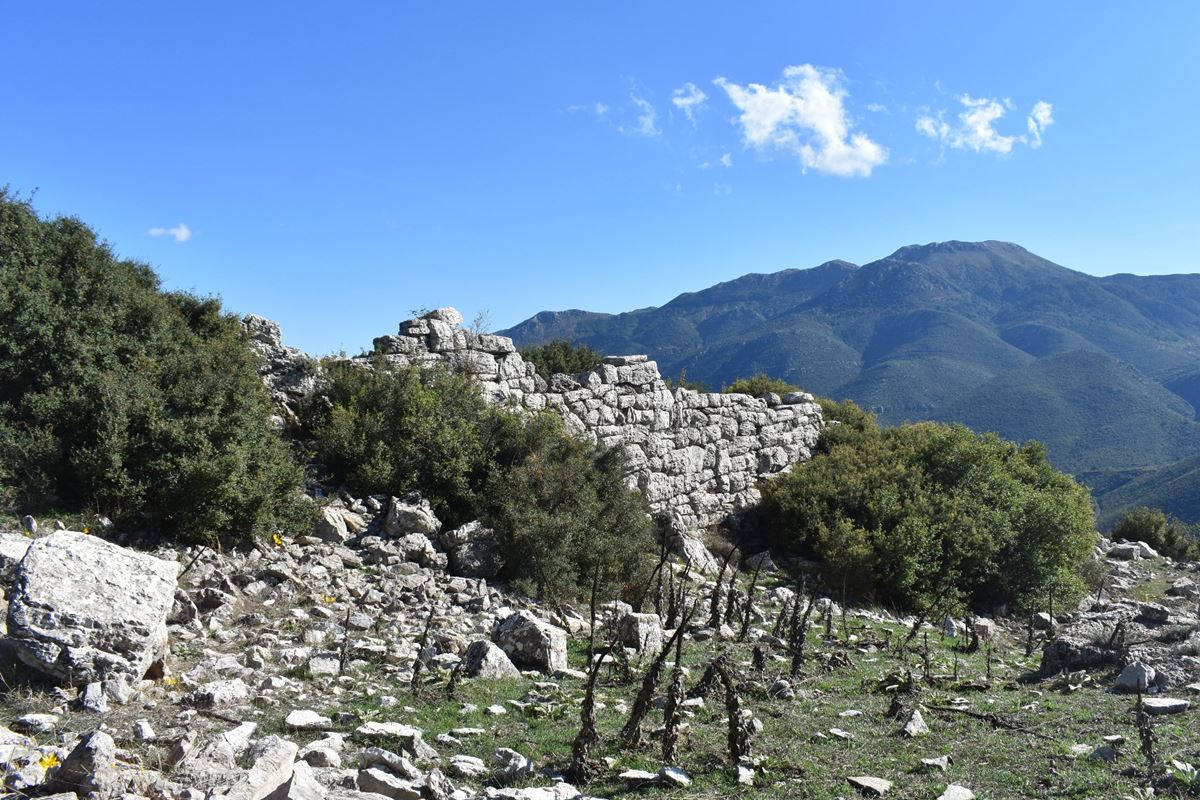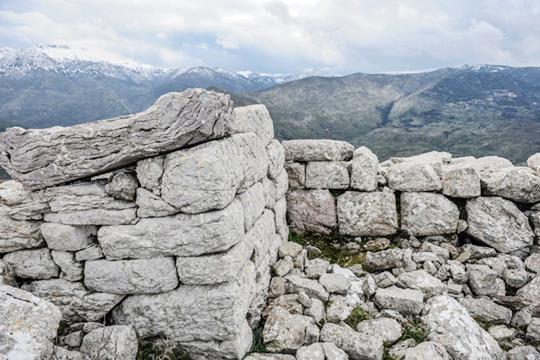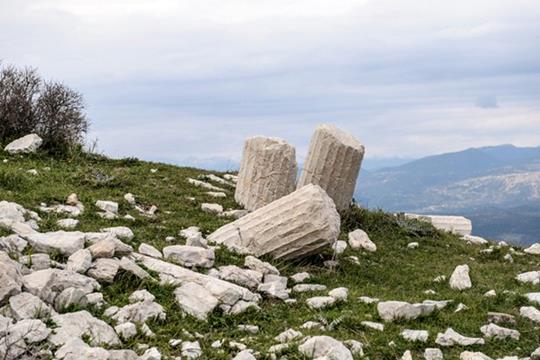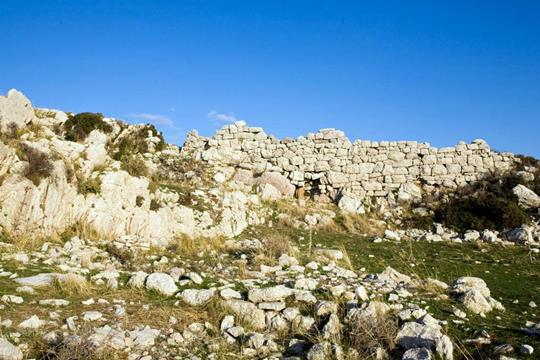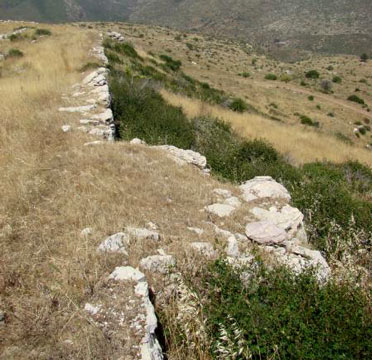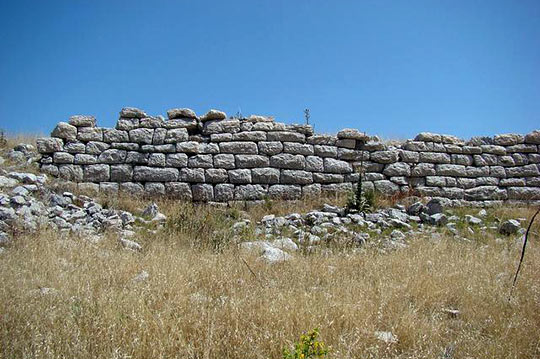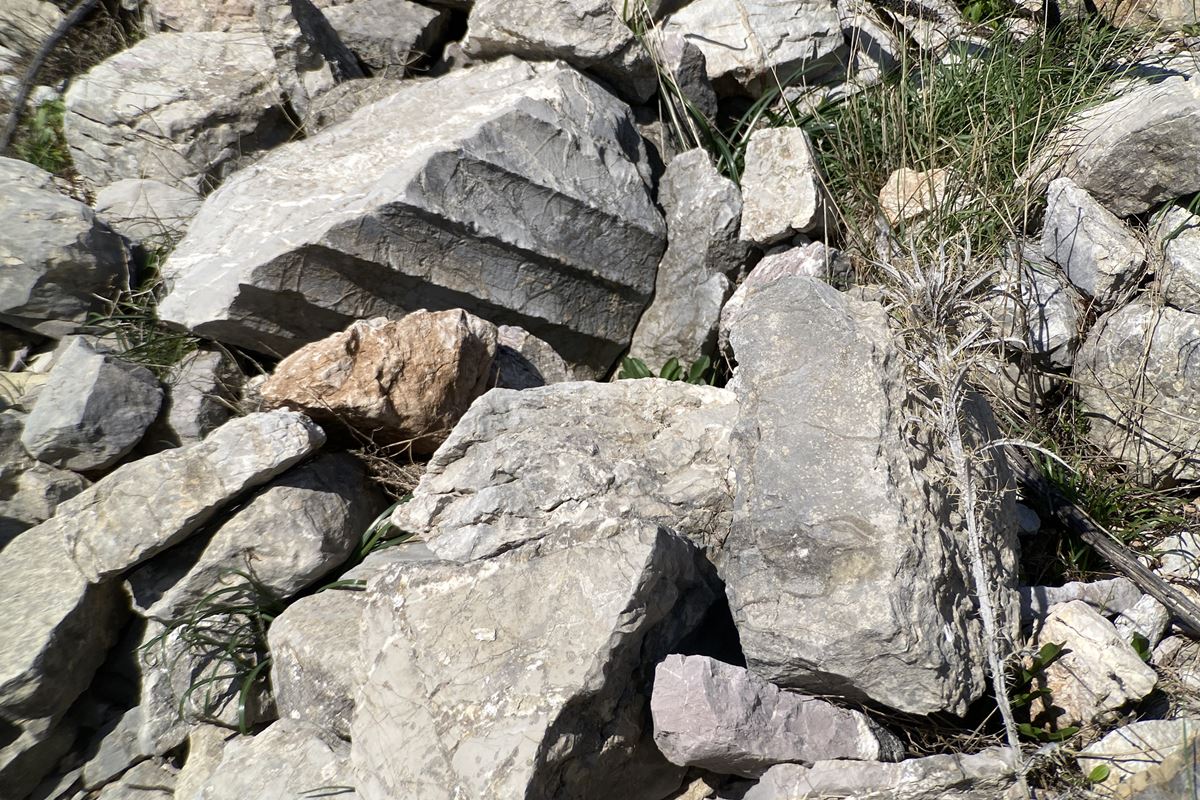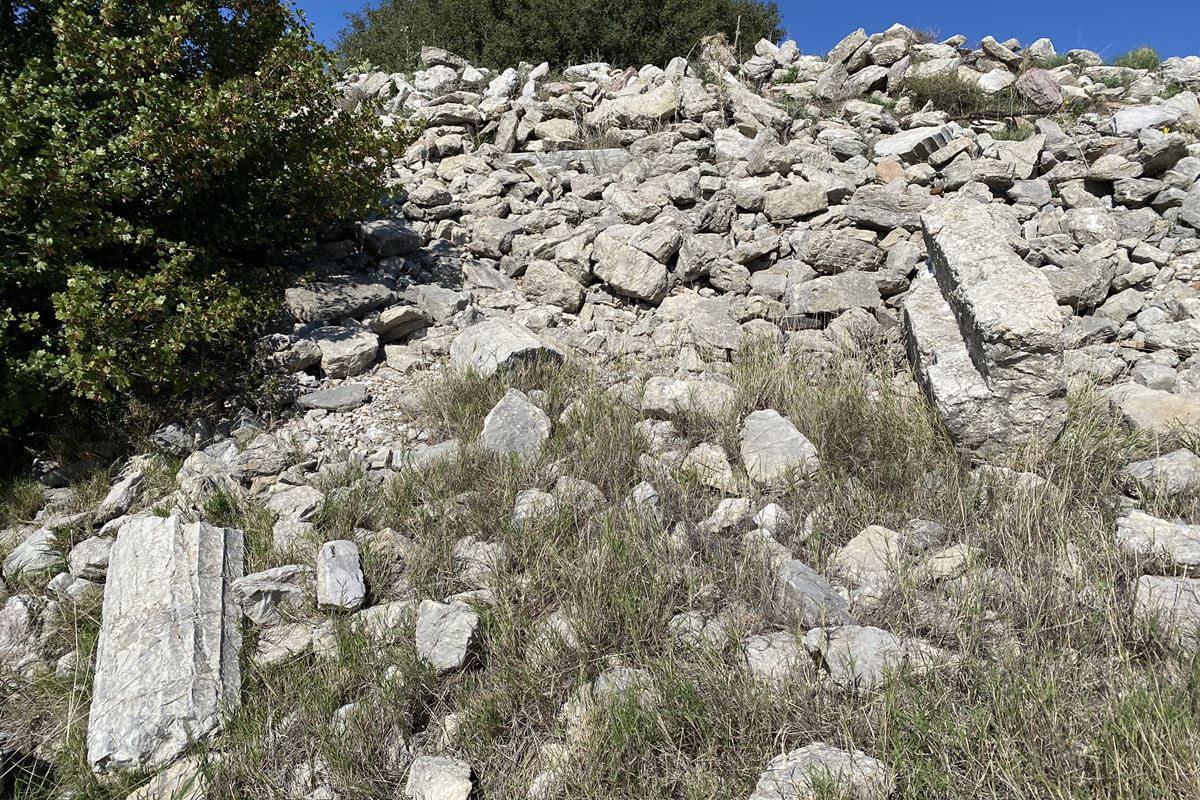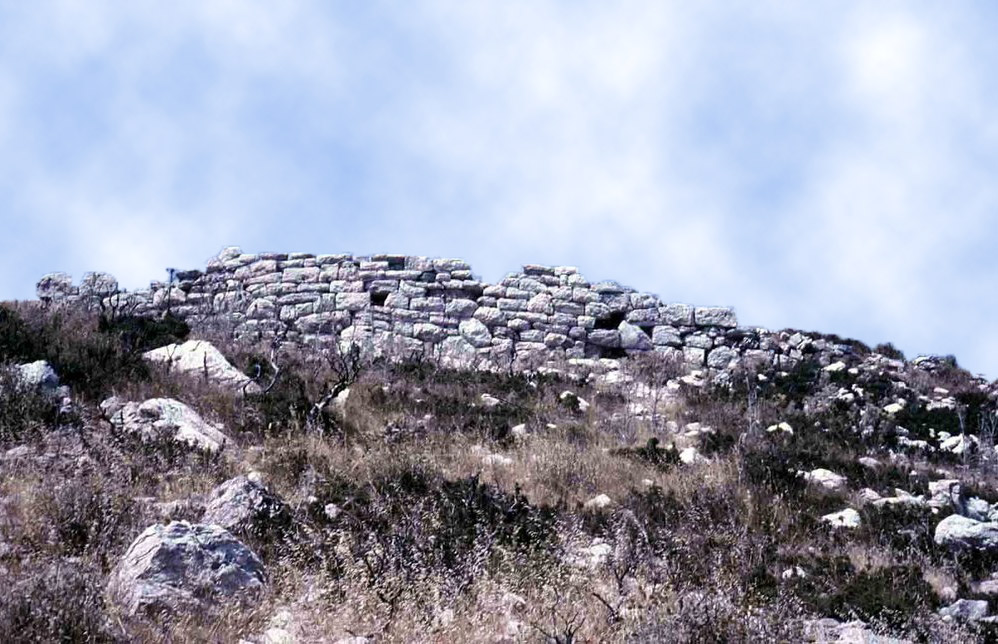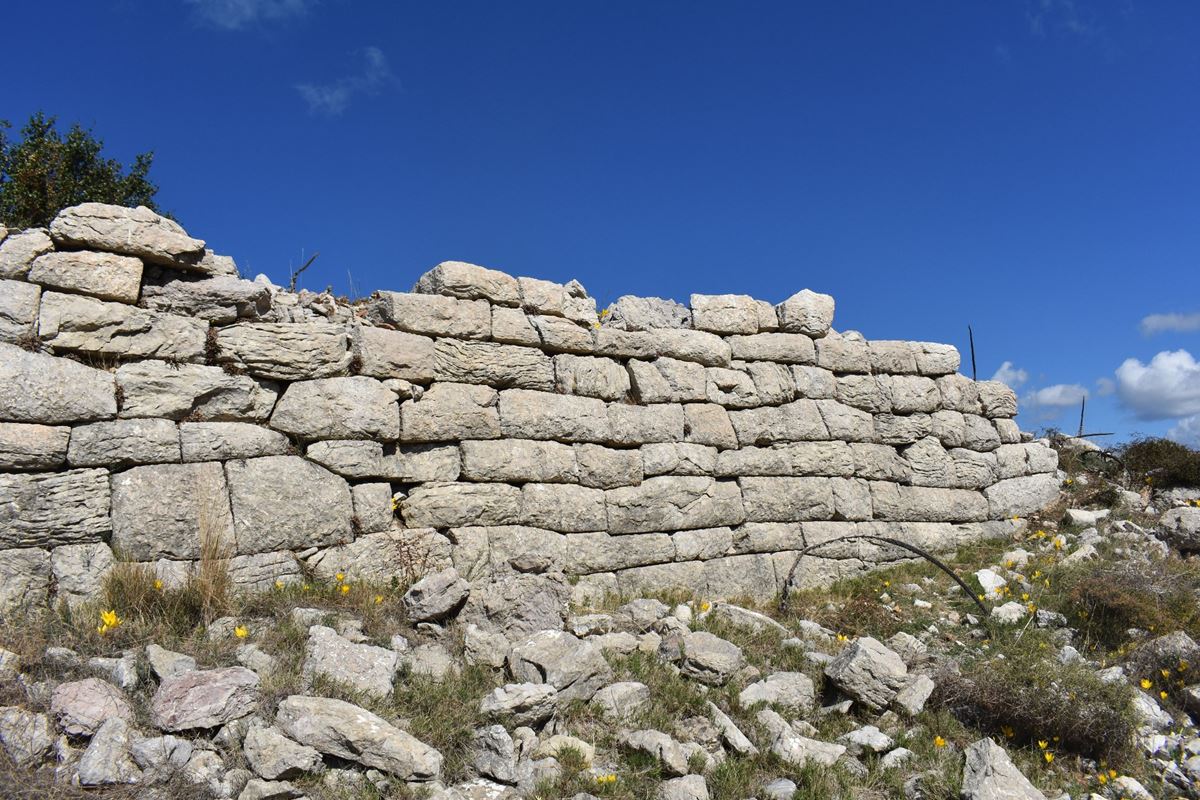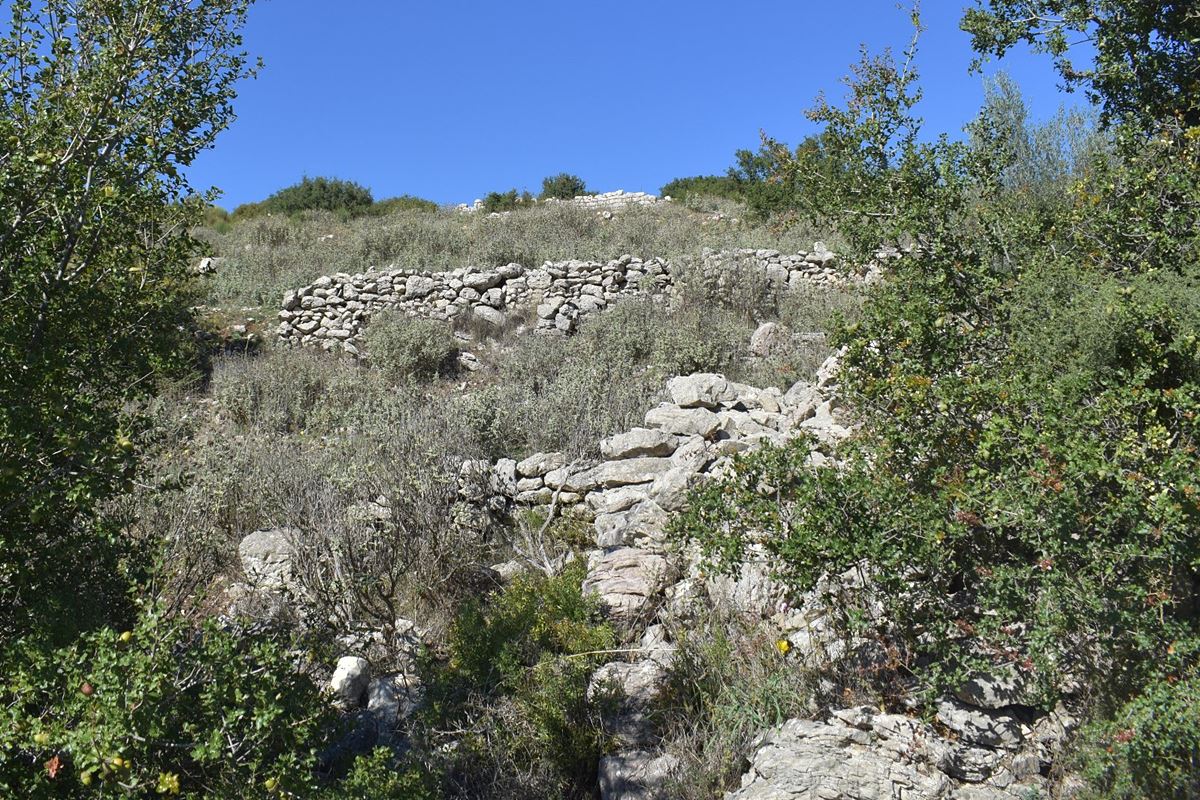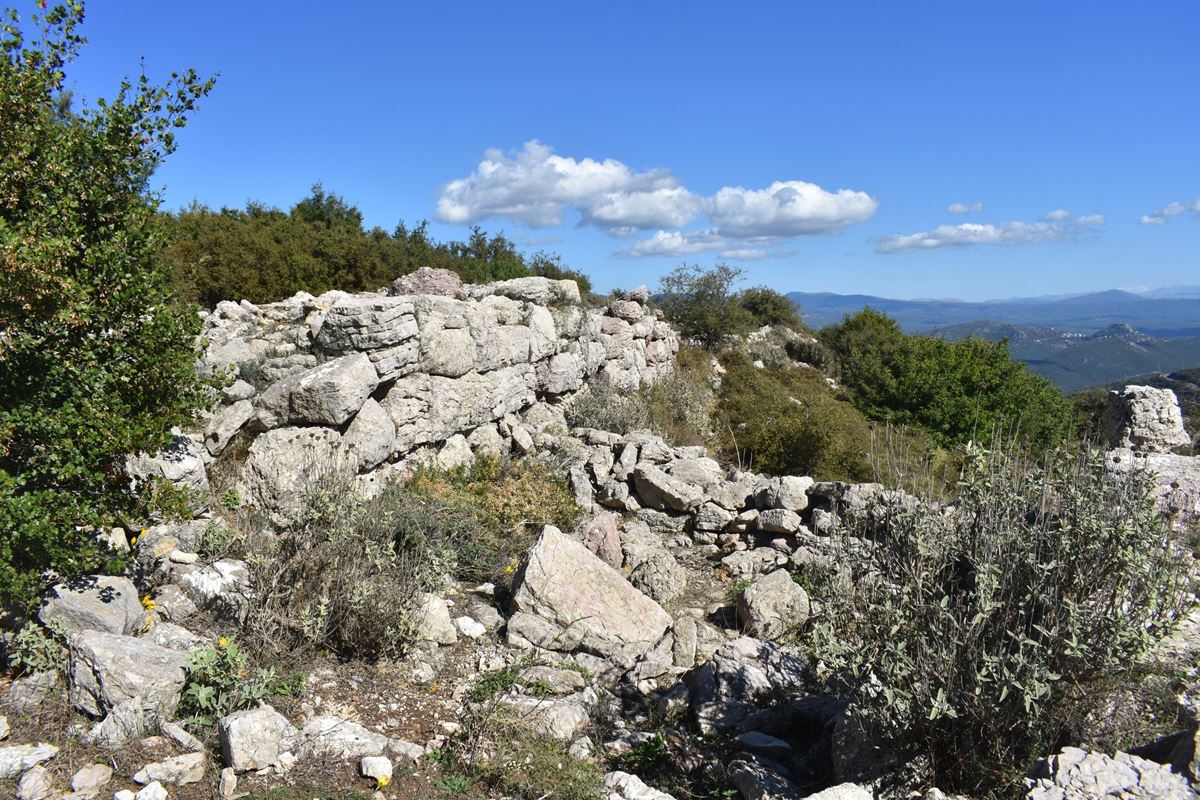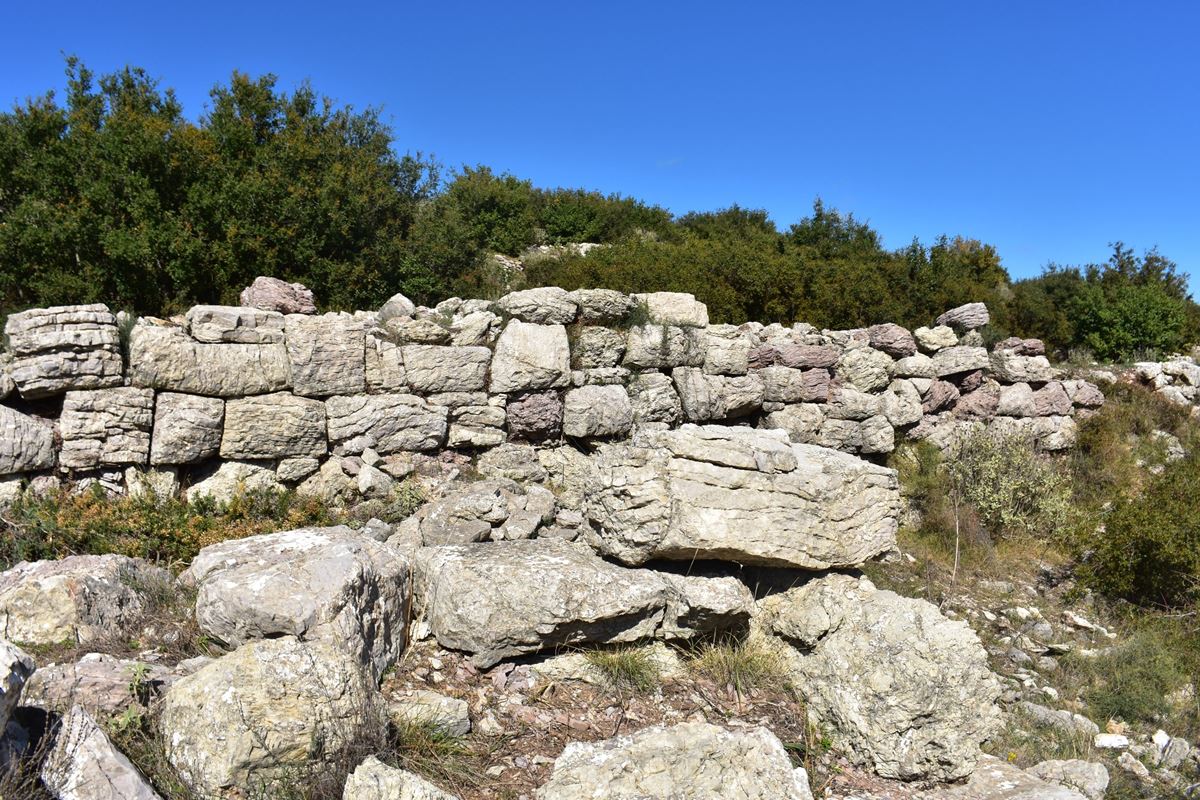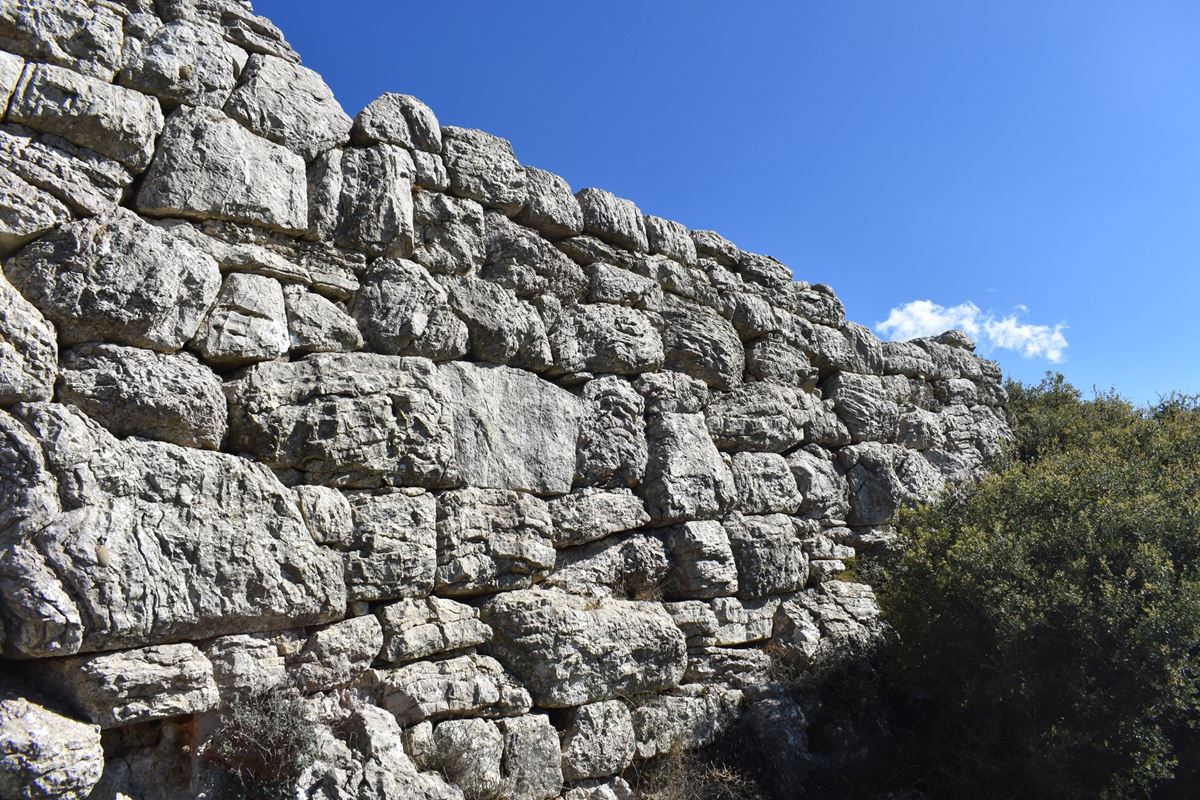Theisoa, Andritsaina-Krestena, Elis,West Greece
Castle of Theisoa
| Location: |
| On a hill south of the village Theisoa in Eleia, Western Peloponnese |
| Region > Prefecture: | 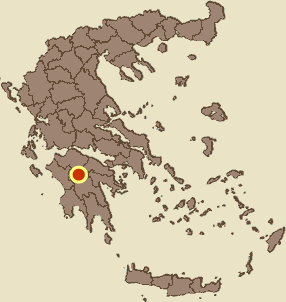 |
| West Greece Elis | |
| Municipality > Town: | |
| City of Andritsaina-Krestena • Theisoa | |
| Altitude: | |
|
Elevation ≈ 760 m (Relative Height≈300 m) |
| Time of Construction | Origin | |
| Various periods | ANCIENT |
|
| Castle Type | Condition | |
| Castle |
Rather Poor
|
A Frankish castle of the 13th century built at the location of the ancient city Theisoa, on a hill south of the modern village Theisoa (old name Lavda).
It was built by Hugo de Bruillere, the first Baron of Karytaina who took the region as a fief in 1209.
History
The Frankish castle was built on the walls of the Hellenistic fortification of ancient Theisoa. The Franks rebuilt the ancient wall and supposedly added towers and buildings.
Its founder must have been Hugo de Bruyeres (or de Briel), who was granted the barony of Karytaina with 24 fiefs in the division made in 1209.
Inside the castle was the Catholic church of Sainte-Hélène, from which the castle took its medieval name.
The Frankish castle must have been built at the beginning of the Frankish period (perhaps in the 1210s) as there was a need to protect the capital of the principality, Andravida. This purpose was served by the two castles on either side of Andravida: Agia Eleni/Lavda and Krepakore.
So this castle was one of the early Frankish castles, which perhaps explains why the Franks used ancient fortifications (which, in general, they avoided) and why it was so crudely constructed since nothing survives of the medieval additions, while much remains of the Hellenistic fortification. It should be noted that the neighboring castle of Karytaina, which became the seat of the barony, was built a few decades later.
The castle of Theisoa/Agia Eleni/Lavda is known from an episode of the beginning of the 14th century: In 1301 the 37-year-old Isabelle Villehardouin married the 20-year-old Count of Piedmont Philip of Savoy, who in this way became the Prince of Achaea.
The couple settled in Morea in 1302 and very quickly Philip became unpopular to Franks and Greeks, because of his greed and the heavy taxation he imposed (the young prince predicted that he would not last long on the throne of the principality and wanted to get some money fast).
In 1304, not wanting to pay the exorbitant sums demanded by Philip, the Greeks of Skorta revolted. They elected the brothers Georgios and Ioannis Micronas as leaders in Linistaina and asked for the help of the Byzantines of Mystras. The governor of Mystras responded immediately and sent an army, which helped the rebels capture the almost unguarded castles of Agia Eleni and Krepakore which were completely destroyed. (The governor of Mystras at that time had the title Kefali with a one-year or, at most, two-year term and we do not know who held this position in 1304.)
After the first successes, the rebels attempted to capture a third castle, Beaufort (an unidentified castle near ancient Elis, not Lefktro) but in the meantime the Frankish knights managed to regroup, and led by the lord of Saflauro Nicolas le Maure they counterattacked and pushed back the Byzantines. The revolt ended there.
After these events (which are recounted in the French version of the Chronicle of Moreus) the castle was probably not repaired and was not used again. It is not included in the lists of Frankish castles of the 14th and 15th centuries.
Structure, Fortification & Buildings
The ancient fortification covered an area of 42,000 sq.m. within a perimeter of 880 meters. Inside, at the highest point, there was a second, inner wall that formed an inner citadel, the keep, that had an area of 3,500 sq.m. and a perimeter of 240 meters. The northern side of the citadel coincided with the outer wall.
In the external fortification at least 7 towers are observed, at a low height, one of which, at the southern end, is round.
At least 2 square towers are observed in the inner citadel.
All the towers are preserved at a low height (photos 5, 6).
The gate of the outer castle was at the southernmost end of the fortification, while the gate of the citadel was at the southeast corner of the inner wall.
The Frankish castle of the 13th century is believed to have been on the site of the inner citadel, at the summit.
Near the inner wall are traces of a small ancient Doric temple as inferred from fragments of 20-ribbed columns and also from fragments of metopes.
In general, many remains of the ancient fortification can be seen in the area, but not a single bit of the medieval fortification has been found. The surviving walls all look ancient, with large semi-processed stones, without binding mortar. There are not even surface findings that point to medieval use.
The Dutch School of Archeology discovered in Theisoa a few remains of small houses, the dating of which is uncertain.
This complete lack of medieval remains gives rise to some doubts as to whether the castle of Theisoa was ever a Frankish castle and whether it is correctly identified with the castle of Agia Eleni.
| First entry in Kastrologos: | June 2013 | Last update of info and text: | July 2023 | Last addition of photo/video: | July 2023 |
Sources
- Antoine Bon, 1969, La Morée franque. Recherches historiques, topographiques et archéologiques sur la principauté d'Achaïe (1205-1430), Editions de Boccard, pp.385,386,388
- Photos 1 & 11-15 by Harry Lolas and his page in Facebook (July 2022)
- Photos 8, 9 Nick Collins (October 2021)
- Konstantinos Kourelis, “MONUMENTS OF RURAL ARCHAEOLOGY MEDIEVAL SETTLEMENTS ΙΝ ΤΗΕ NORTHWESTERN PELOPONNESE”, Presented to the Faculties of the University of Pennsylvania in Partial Fulfillment of the Requirements for the Degree of Doctor of Philosophy, 2003, pp.305,306
- William Miller/b>, 1909, Ιστορία της Φραγκοκρατίας εν Ελλάδι (1204-1566), The Latins In The Levant: A History Of Frankish Greece, 1204-1566) μετάφρ. Σπυρ. Π. Λάμπρου, μετά προσθηκών και βελτιώσεων, Εν Αθήναις Ελληνική Εκδοτική Εταιρεία, 1909-1910, pp.293
- Ιωάννης Θ. Σφηκόπουλος, «Τα Μεσαιωνικά κάστρα του Μορηά», Αθήνα,1968, σελ.299
|
|
| Access |
|---|
| Approach to the monument: |
| - |
| Entrance: |
| Free access |



